
Yesterday was a big day for transportation in the Portland region. The Oregon Legislature’s Joint Committee on Transportation (JCT) came to town for the first stop on a 13 city, statewide tour to garner feedback on what’s expected to be a multi-billion dollar funding package in the 2025 legislative session.
Over the course of seven hours, an impressive assemblage of state lawmakers and agency leaders took a bus tour of Portland, participated in a two-hour roundtable discussion, and held a public hearing. The bus tour and roundtable were invite-only affairs and there was no livestream or official recording available to the public.
I took part in all three events (you can read my live updates on X if you’d like) and learned perspectives from across the political spectrum and got a good sense of the contours of the debate at the outset of this important process. The day was full unsurprising, disappointing and hopeful statements, relatively bold commitments from elected leaders, lines lightly drawn in the sand, emotional testimonies, and more. I’ll share more about the public hearing and public testimony in a separate post, but for now I want to focus on what I learned on the bus tour and roundtable discussion (which I recorded and might turn into a podcast soon).
Get comfortable and scroll down….
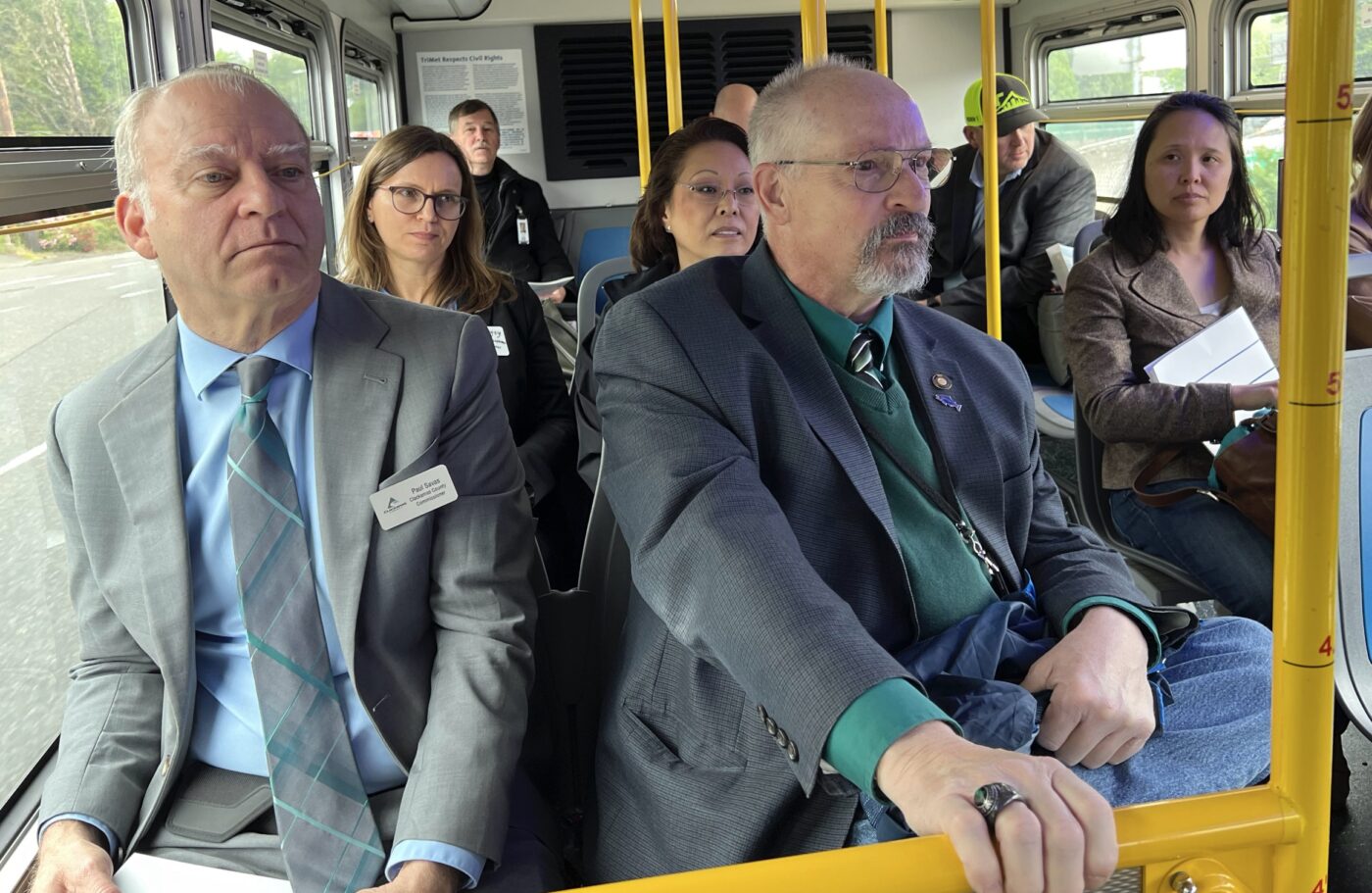
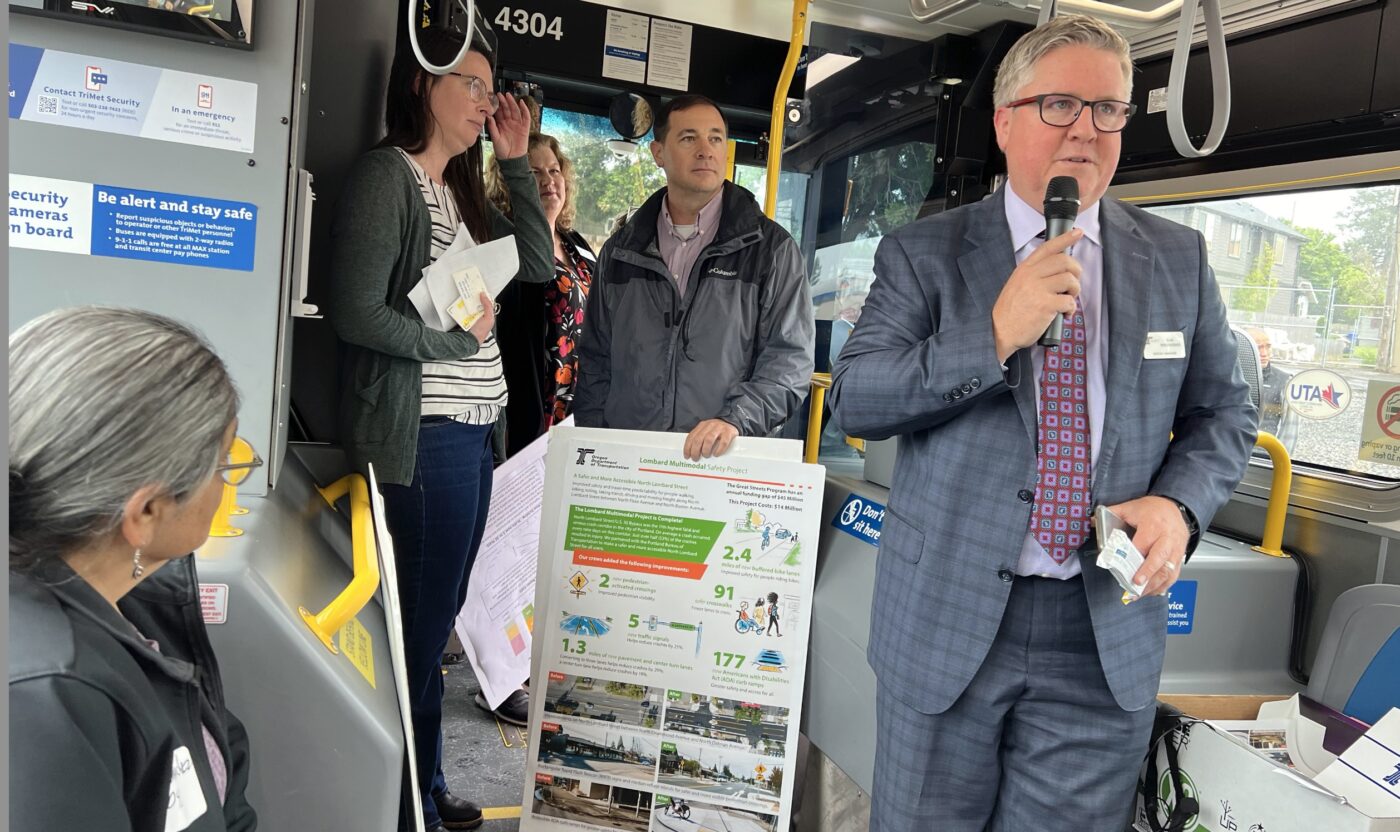
Coming into these conversations, everyone wanted to know how ODOT is going to raise new revenue for transportation. We can debate why their finances are in such bad shape, but there’s no denying the fact that the agency (like many transportation departments) is in a hole that grows deeper by the year. The culprits are declining gas tax revenue, paying for commitments to expensive freeway expansion megaprojects, and soaring inflation.
ODOT says they have a $1.8 billion annual funding gap. And that’s just to pay for services and basic system investments. When they add three other projects they claim the legislature committed to in 2017 — the I-5 Rose Quarter Project and two phases of an expansion of I-205 (including a new Abernethy Bridge near Oregon City) — they add another $2.6 billion to the gap.
This funding hole is part of the reason why the 2025 conversation has begun with a clear message from ODOT, JCT members and other insiders: Beyond coming up with a funding plan for the “unfinished business” of those aforementioned megaprojects, there will be no new project spending in the next bill. The focus will be on “critical services,” operations and maintenance. So don’t send your senator or representative a wishlist of projects, because they probably won’t consider it.
I shared a seat on the bus with Oregon Transportation Commission Chair Julie Brown, one of five members of the OTC, a governor-body that has the unenviable task of setting ODOT’s budget. Brown said the focus on maintenance is due in large part because project costs have become “astronomical” due to inflation and budget overruns. “We’re sticker-shocked,” is how she put it to me.
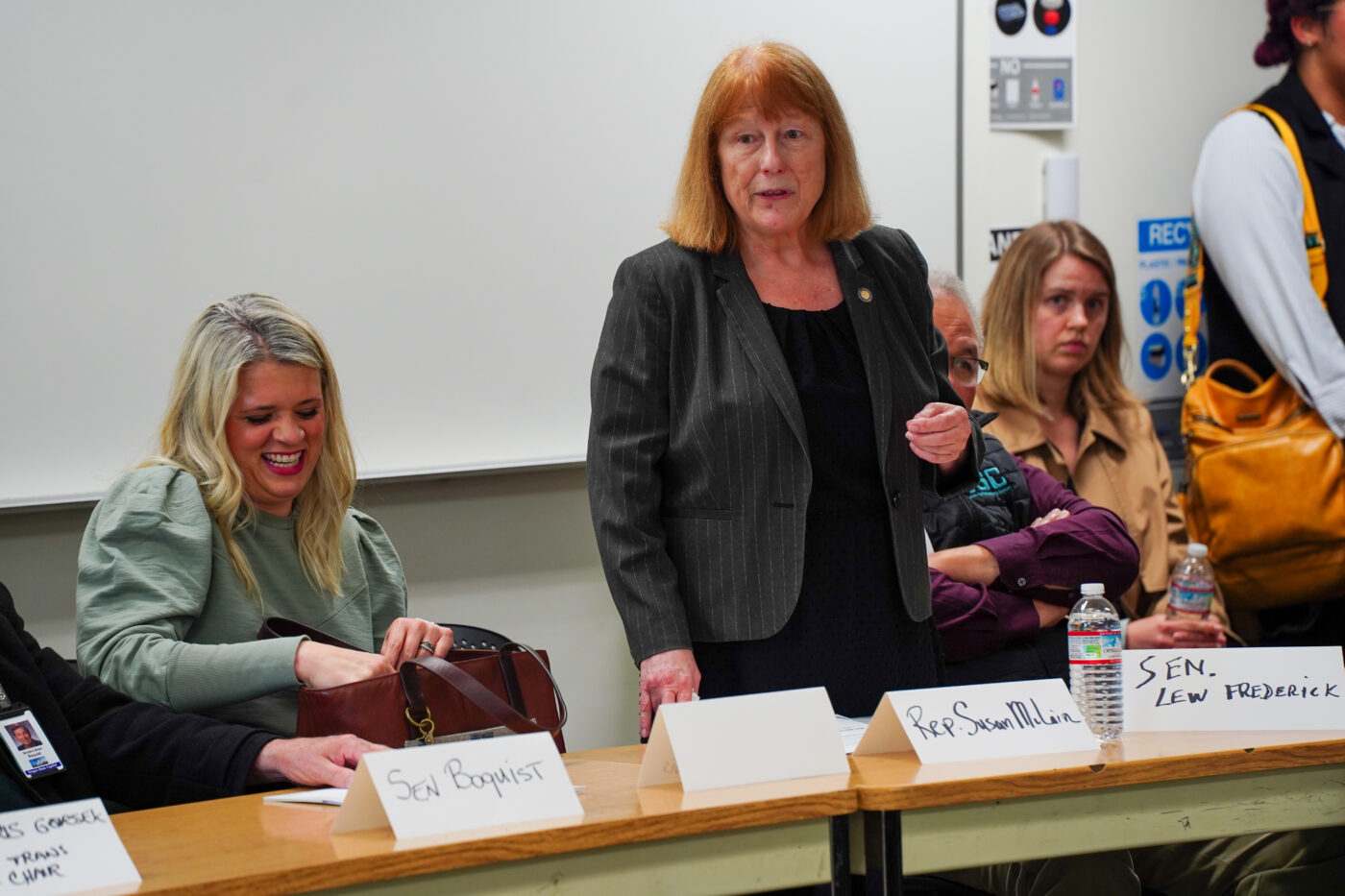


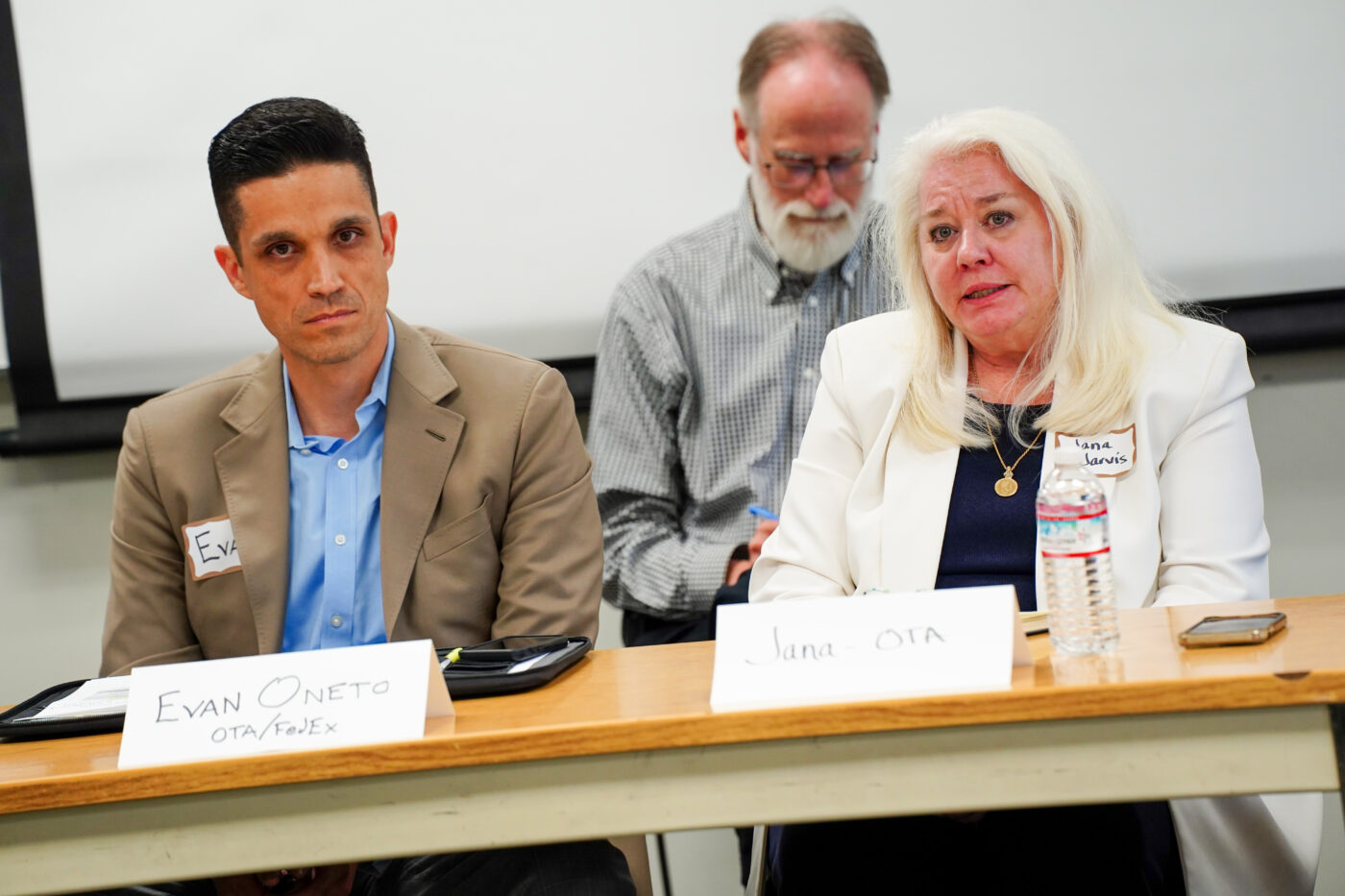


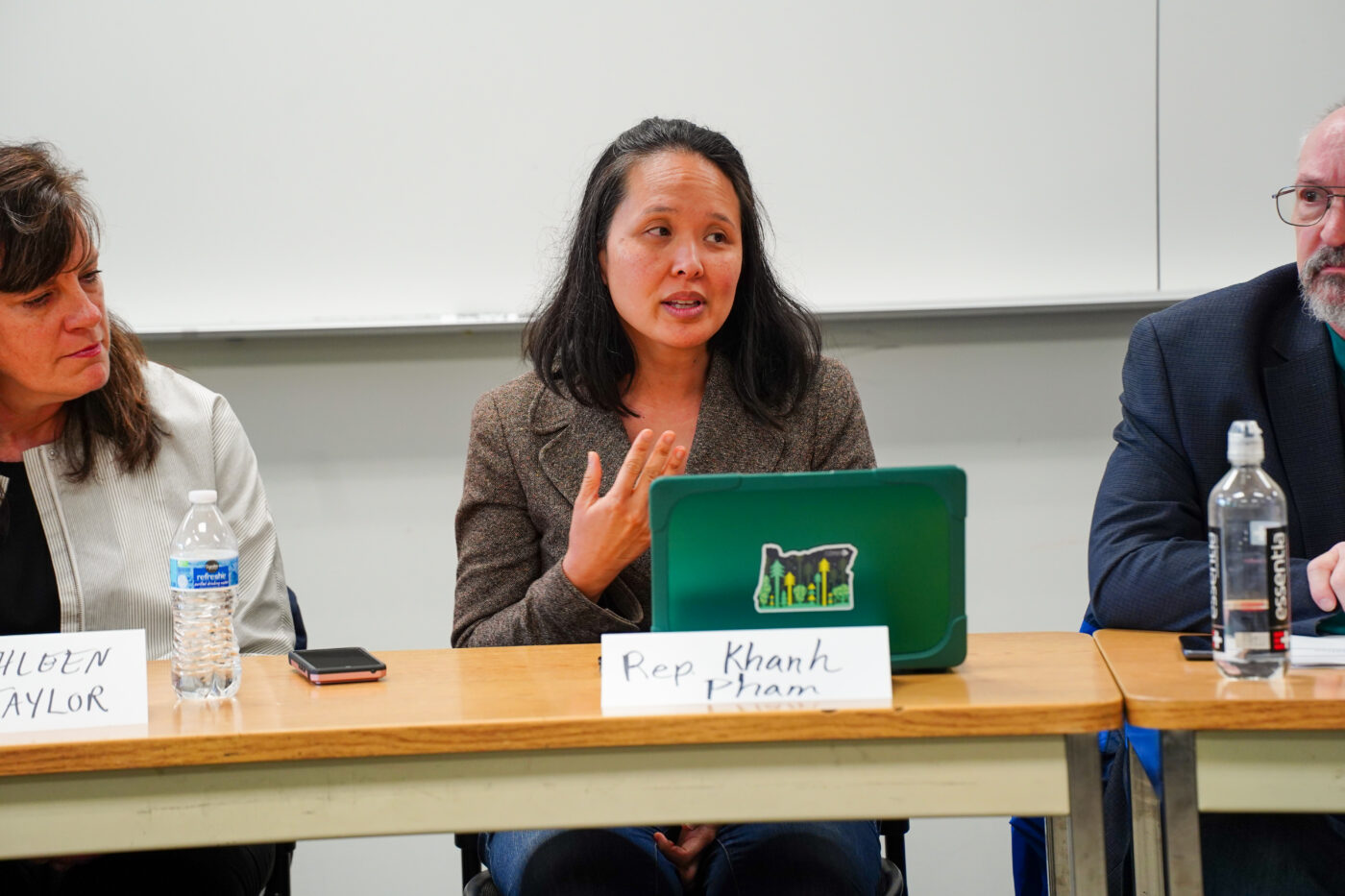
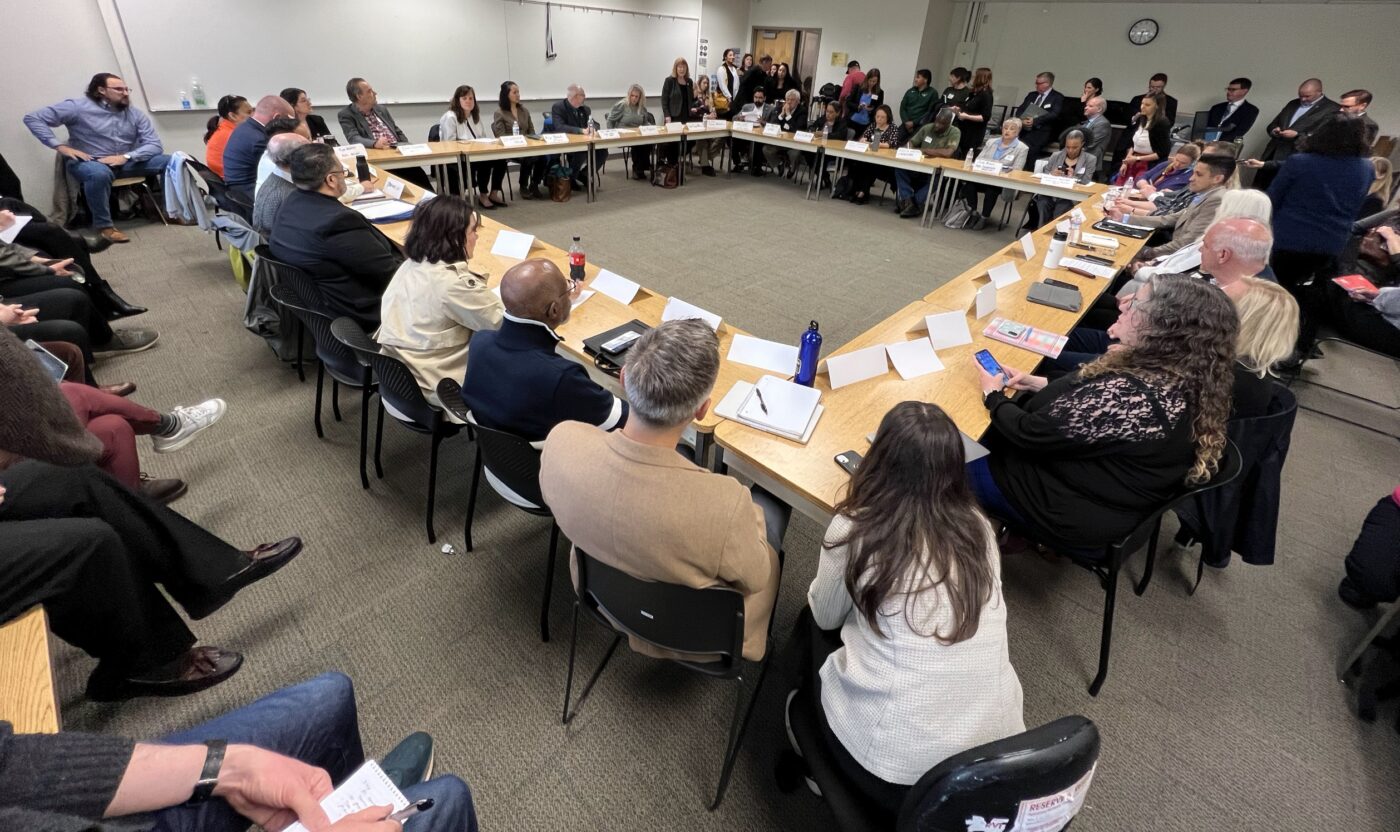
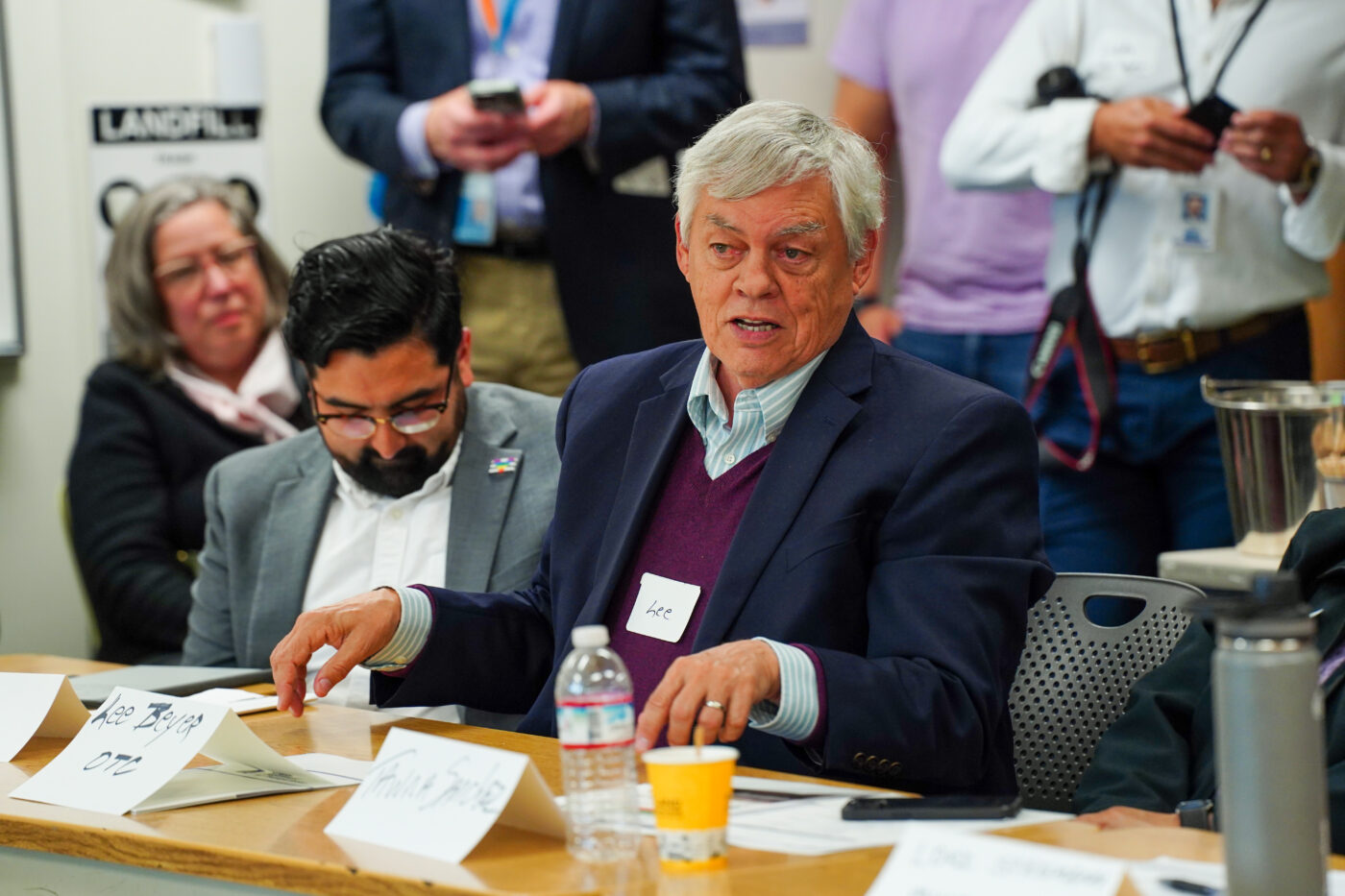
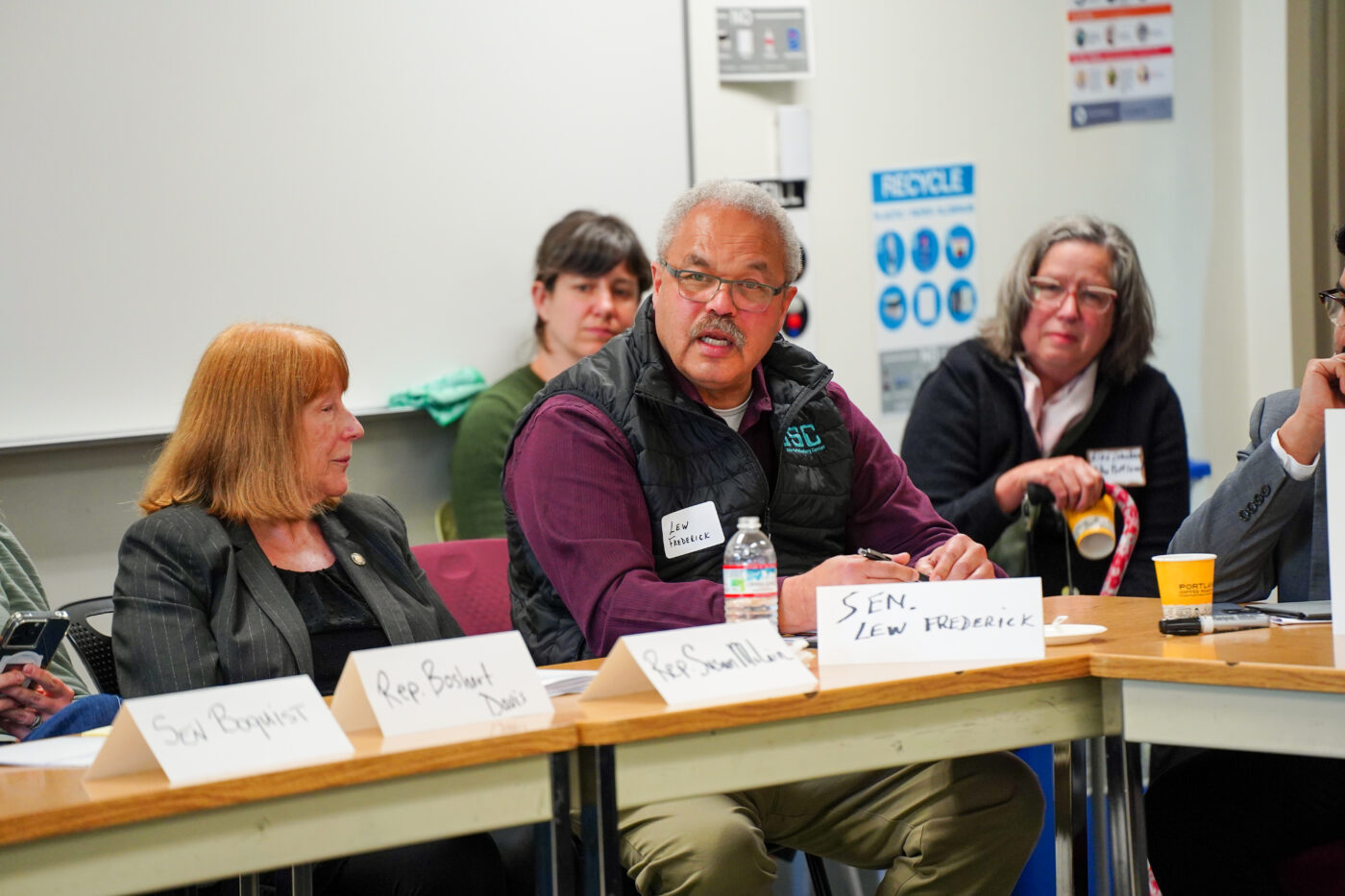
That being said, Brown (who has a deep background as a public transit system manager and advocate) shared that existing ODOT programs like the successful and popular Statewide Transportation Improvement Fund (STIF, created in House Bill 2017) could see a huge bump in funding if/when a new bill is passed. That program currently spends about $110 million per year on public transit infrastructure and services statewide. One source said the STIF allotment in the 2025 bill could go up as much as 500%.
How will the state fill their funding gap and fund the infrastructure so many Oregonians want? Yesterday’s conversations illuminated a few front-running ideas.
Metro, Portland’s elected regional planning authority, had two representatives at the roundtable, Councilor Juan Carlos Gonzalez (who’s also chair of Metro’s Joint Policy Advisory Committee on Transportation) and Councilor Christine Lewis. They were unified in a belief that it’s time to push forward on some sort of road usage charge (also called a vehicle miles traveled tax or VMT tax), something Oregon’s been working on in pilot-mode for many years.
“A road user charged should be our region’s future,” Gonzalez said at the roundtable. “I’m ready to personally say, let’s figure out the next steps to get there,” Lewis added.
Those steps will need to make sure the new fee doesn’t negatively impact people with low incomes. Everyone around the table is aware of this political pitfall around a road user charge. JCT Co-Chair Rep. Susan McLain voiced her interest in a “fair VMT”. Indi Namkoong with nonprofit Verde said they support a VMT tax, but only one that is, “Fair and accountable to the low income communities and communities of color that we work with.”
But cold water was immediately thrown on the idea by advocates for truckers and drivers. Oregon Trucking Association President Jana Jarvis said a road usage charge would be expensive, difficult to administer and wouldn’t net nearly as much profit for ODOT as the gas tax does. Jarvis also said her people aren’t in the mood for more taxes. “We took a 53% increase [in taxes] in 2017 and that was a huge increase,” she said. “We did it to pay for the Rose Quarter project and we don’t have the Rose Quarter project… and many of those funds were diverted to non-road projects.”
And Marie Dodds with 765,000 member strong AAA Oregon/Idaho isn’t into the idea either. “A road usage charge is going to be a long time coming and very expensive,” she said, adding that she too is disappointed promised highway projects haven’t been completed and making very similar talking points to trucking reps she sat next to.
But Dodds, and many other people around the table, seemed fine with another idea that’s likely to figure large in the 2025 package: Indexing existing revenue streams to inflation. There’s widespread agreement that indexing current fees to inflation is a politically feasible, short-term solution to help raise revenue.
What wasn’t mentioned at the roundtable was tolling. It appears Governor Tina Kotek’s move to mothball ODOT’s freeway tolling plan has put that concept on ice politically — right when Oregon needs it most.
On a more local level, Portland Bureau of Transportation Director Millicent Williams added to the chorus of support for basic maintenance funding. One of the bus tour stops was the intersection of SW Broadway and Jackson where Williams talked about failing pavement and the city’s lack of resources for street sweeping. “With sustainable funding, we can get to work on the backlog of deferred maintenance and stabilize the foundation of our system,” she said.
While Williams is clearly committed to her “back to basics” message of funding maintenance over new capital projects, she’s also a big supporter of ODOT’s I-5 freeway widening at the Rose Quarter. “It is an important artery, it is an important connection between Canada and Mexico,” she told a full bus as we rolled through the Rose Quarter. “We often say the only stop sign along I-5 is right here. And I don’t know if that’s the compliment that we want to receive, but it is certainly the comment that we hear.”
Williams’ support is notable because whether or not Oregon should continue investing in freeway expansions is a good example of just how far apart various factions of the debate around transportation funding are right now. Some believe “no more freeways” is the only answer and others believe that concept is untenable.
Oregon Walks Executive Director Zachary Lauritzen spoke up at the roundtable to say, “I want to say this very clearly: We cannot build our way out of congestion. We can build another lane, we can build another lane and another lane. We can do that. And then we’ll be Los Angeles or Houston.” Lauritzen was among several people who spoke about the need for a “holistic” approach to transportation that integrates land-use, housing, and other issues — not just freeway megaprojects.
Rebecca Sanders, a PhD and founder of Safe Streets Research, a consulting firm, added, “We shouldn’t be expanding highways for any reason.”
But those views drew a retort from JCT Co-Vice Chair Representative Shelly Boshart Davis, a Republican whose family owns a trucking company. “When we talk about not being able to build ourselves out of this problem, I categorically disagree. We can build ourselves out of some of this problem,” she said.
“When we talk about the Rose Quarter, that’s the only two-lane section of I-5 in an urban area from Canada to Mexico. It’s two lanes. I’m not asking for five. And it’s one of the top 30 bottlenecks in the United States, so I think that we can’t just say, ‘we can’t build ourselves out of this problem,’ we can, in some cases. We gotta get those trucks through if we want to lower emissions.”
Talk of needing more investment in biking, walking and transit in order change driving habits was well-represented at the meeting. The Street Trust Board Chair Thomas Le Ngo spoke up about the need to encourage less driving because, “The average cost of car ownership is about $12,000 a year and it’s going up.” Ngo pointed to The Street Trust’s free e-bike program as a “proven model for behavior change.”
But House Rep Tawna Sanchez, a Democrat who represents north and northeast Portland wasn’t comfortable with all the talk about driving less. She said poorer people often have no choice other than to drive:
“I’m a little frustrated with that sort of thing… While I appreciate the concepts of reductions of vehicles and multimodal and the whole thing, I still feel like I sit in a place where I work with people who are low income all day long in my real life job [Rep Sanchez is a social worker]. We still have food deserts in this city and in this state. When we’re building low-income housing, we’re building it without parking for the most part, and have an expectation that people will — somehow or another, miraculously be able to shop for their five, six kids or whatever, however many people they have in their home once a month or twice a month — and be able to bring that all back on the bus or something like that. This is not reality for poor people, let’s just be realistic… we all got here some kind of way and not everybody can ride a bike, or do all of those things, you know, keep it all on transit or whatever. It’s just difficult on some level so I want us to think about that too.”
Senator Lew Frederick, a Democrat whose north Portland district I-5 runs through, shared a similar sentiment:
“I’m not getting on a bicycle anytime soon [he’s 72]. I used to love riding, I rode a bicycle every day. But I know my balance won’t let me be on a bicycle. So I’m not going to be doing it. I’m also not going to be taking the bus, or the train to Salem, because there are only two trains. And so I need to be able to move around a lot of different ways. So we need to be looking at the needs of folks out there and figuring out how we can support what’s going on.
Every day, I get off the freeway at the Rose quarter. Every day, I get worried every time I get on the freeway at the Rose Quarter. The lanes are too narrow right now, nevermind trying to to make them even more narrow.”
It’s curious why folks make statements like this because there has never been a proposal to force everyone out of their cars and onto bikes and buses. Thankfully, Southeast Portland House Rep Khanh Pham made the point I was screaming silently in my head. She responded to Sanchez by sharing how her family has gone down to just one car — not just to save the earth but to save money. “It’s often not about a conversation about never driving, but we have to balance… the data shows if we were to build a transportation system that allowed people to reduce their miles driven by 20% — so 80% could continue but just a 20% reduction in driving — it would save the average family over $1,450 a year. And that’s a huge that’s a huge savings for working families.”
These comments led to an interesting discussion of behavior change. Rep. Sanchez said “We are not Europe” [one of three people in the meeting who uttered that unfortunate phrase] as a way to explain how she thinks Oregonians are simply too stubborn to change behaviors. “We don’t want to change. We don’t want to do things differently. We have loads of stubborn individualism.”
JCT Co-Chair Senator Chris Gorsek added that people haven’t changed because the system hasn’t changed “We’ve been trying to get people to use alternative forms of transportation for years. For years! We’ve done transit oriented development, and then it fails. So I think it’s a good idea, but we have to find a different mechanism for inspiring people to actually do those things… We have to think of a new model, a new way of thinking about what we’re doing with transportation, I would argue a new and bold way of thinking…”
“New” and “bold” isn’t what politicians are typically good at, so I’m not very hopeful that Gorsek or anyone else can encourage significant behavior change.
I thought how ODOT Director Kris Strickler posed a question in his closing comments at the roundtable was very interesting. According to ODOT calculations, Strickler said, the average Oregonian spends about $350 per year in taxes and fees for their use of the transportation system (per vehicle). “So what do you want to do with that $350?” he asked, rhetorically. “And would you spend more to provide some of the outcomes we’ve been talking about around the table?”
All this talk must lead to somewhere, but the destination isn’t clear yet. Strickler said Oregon is in a “no fail moment,” but politics only cares about votes. With differences on the merits of freeway spending and concerns about new taxes even among the same party and a listening session tour that won’t be over until October, there’s a long road ahead before a package comes together.
And Kelly Brooks, the transportation and infrastructure advisor for Governor Kotek, wasn’t exactly optimistic in her remarks. While she said the Governor “cares a lot about the issue,” her cool outlook on the discussion was notable. “We have to acknowledge that time is a pretty limited resource right now,” she said. “We have a lot of work to do and not much time to do it.”
Senator Brian Boquist, a Republican who represents rural counties and was one of the architects of HB 2017 said he doesn’t think anything will pass in the coming session. He doesn’t see a package getting hammered out in time or the votes to pass it if it did. “I’ll just say I’m the naysayer. I think it’s going to be really tough to do anything big in 2025. It’s going to be 2026… It’s a long road ahead and you’ve got to convince a bunch of people.”




